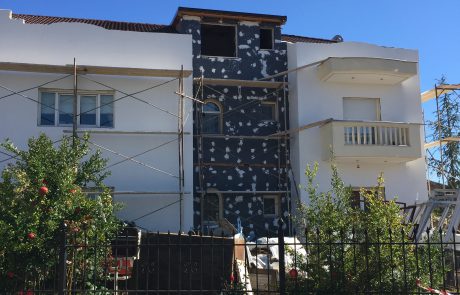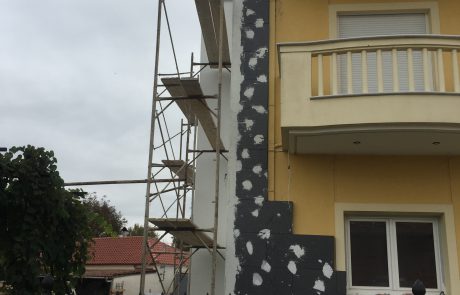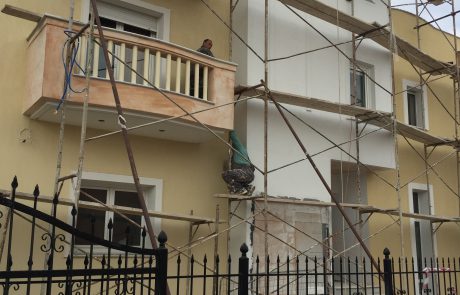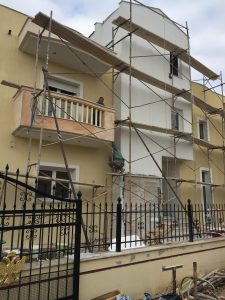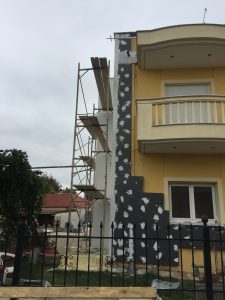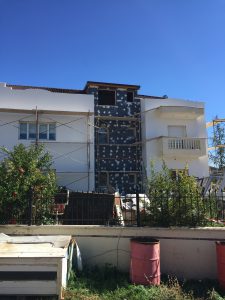External Thermal Insulation Composite System (ETICS)
Following last winter’s wave of bad weather that hit the country and caused heavy snowfall in lots of big cities, the need for the reinforcement of thermal insulation in detached houses and blocks of flats became even more pronounced.
In this context, the demand for putting external thermal insulation composite systems (ETICS) in buildings came up pressing, in order for humidity in their interior – and whatever it causes to that – to be limited as much as possible.
Each building has got different parameters that have to be taken into account for the application of a successful ETICS , such as its existing thermal insulation adequacy, the building elements it is composed of and the local climate of the area.
The ETICS is an alternative application of conventional insulation (double masonry insulation and concrete insulation) and is essentially the only thermal insulation and renovation solution for old buildings that offers an extremely satisfactory thermal insulating effect, as well as saving of useful space, architectural freedom and durability through time.
The insulating effect of ETICS is based on two characteristics:
Firstly, the elimination of thermo-bridges (places where the thermal insulating material is interrupted) at the contact points of beams and pillars with masonry; and secondly because it follows a basic principle according to which thermal insulation is more effective when it is placed in the external part of the building.
The process of external thermal insulation includes the placing of thermal insulating panels in the external part of building elements (bricks – concrete or old plaster) and their covering with ready, thin, industrially produced elastic coatings.
External thermal insulation results in an energy upgrading of the building, reducing its total energy consumption. According to the European directive 2002/91/EK, buildings will acquire an energy identity (Energy Performance Certificates), which will depend on the total energy consumption in KWh/m2. Buildings that do not meet the energy identity demands will be unable to be bought, sold or rented, while a high class energy identity will increase the commercial value and reduce the objective value of the building.
In this way a reduction of electricity consumption for heating or cooling of at least 40-45% is achieved, since the temperature of indoor spaces is kept steady for much longer.
As for the application of ETICS, it is not necessary to build a double external wall and therefore valuable space is gained.
Furthermore, external thermal insulation works do not interrupt the operation of the building internally, while protecting it from external and internal humidity, as well as from rain water, and they also prevent the development of mold and microorganisms.
SEE SOME OF OUR WORK
INTERNAL THERMAL INSULATION
Thermal insulation in the interior of a building is the only solution in case the construction of external thermal insulation is impossible, due to the existence of visible brickwork, a wall attached to another house or because of special architectural choices, such as visible concrete. In these cases, the energy upgrading work on the wall can be carried out on the internal side.
Insulation in the interior guarantees a high speed of heating in winter and an equally high speed of cooling in summer. In winter a better heating comfort is provided, as the temperature measured in the interior is a few degrees higher and the speed of air circulation is less noticeable in the room, in relation to the one when the insulation is external.
The most effective method of internal thermal insulation is the placement of insulating panels made of mineral wool and invested with plasterboard. In this way we achieve high efficiency, minimum reduction of useful space and low work volume, and therefore clean and economical constructions. Stone wool guarantees – along with thermal insulation – the building’s fire protection, while there is also a significant benefit regarding noise insulation and acoustics.
The only disadvantage in comparison with external insulation is the low possibility of taking advantage of the thermal capacity of masonry.

